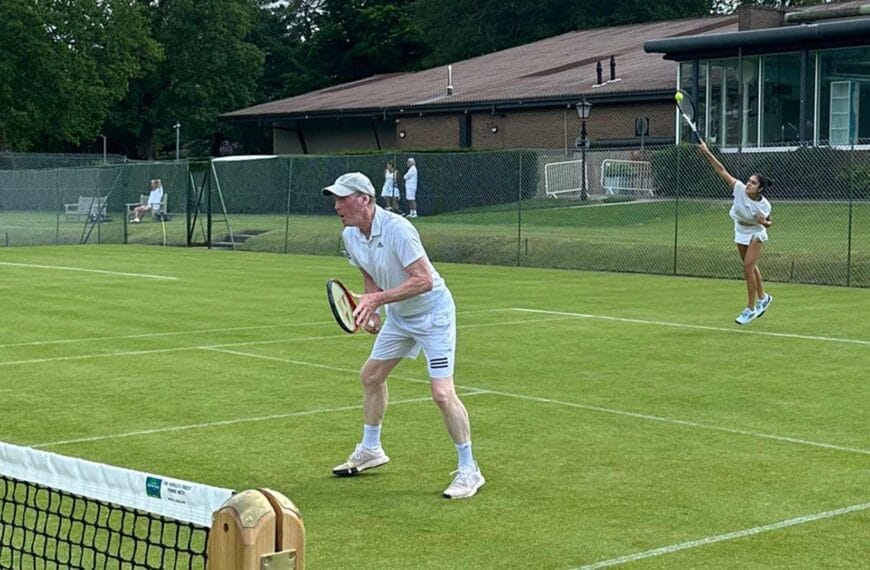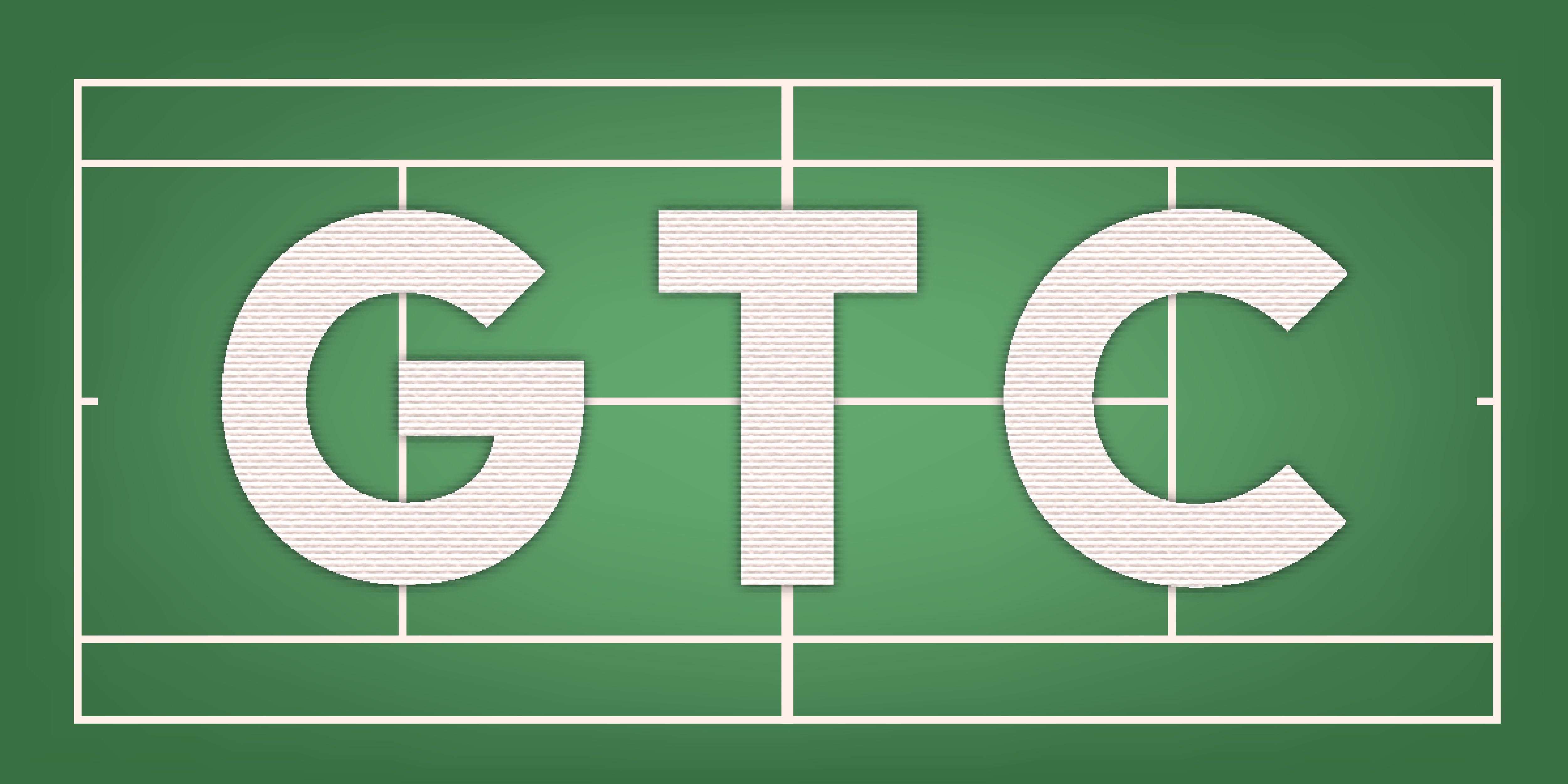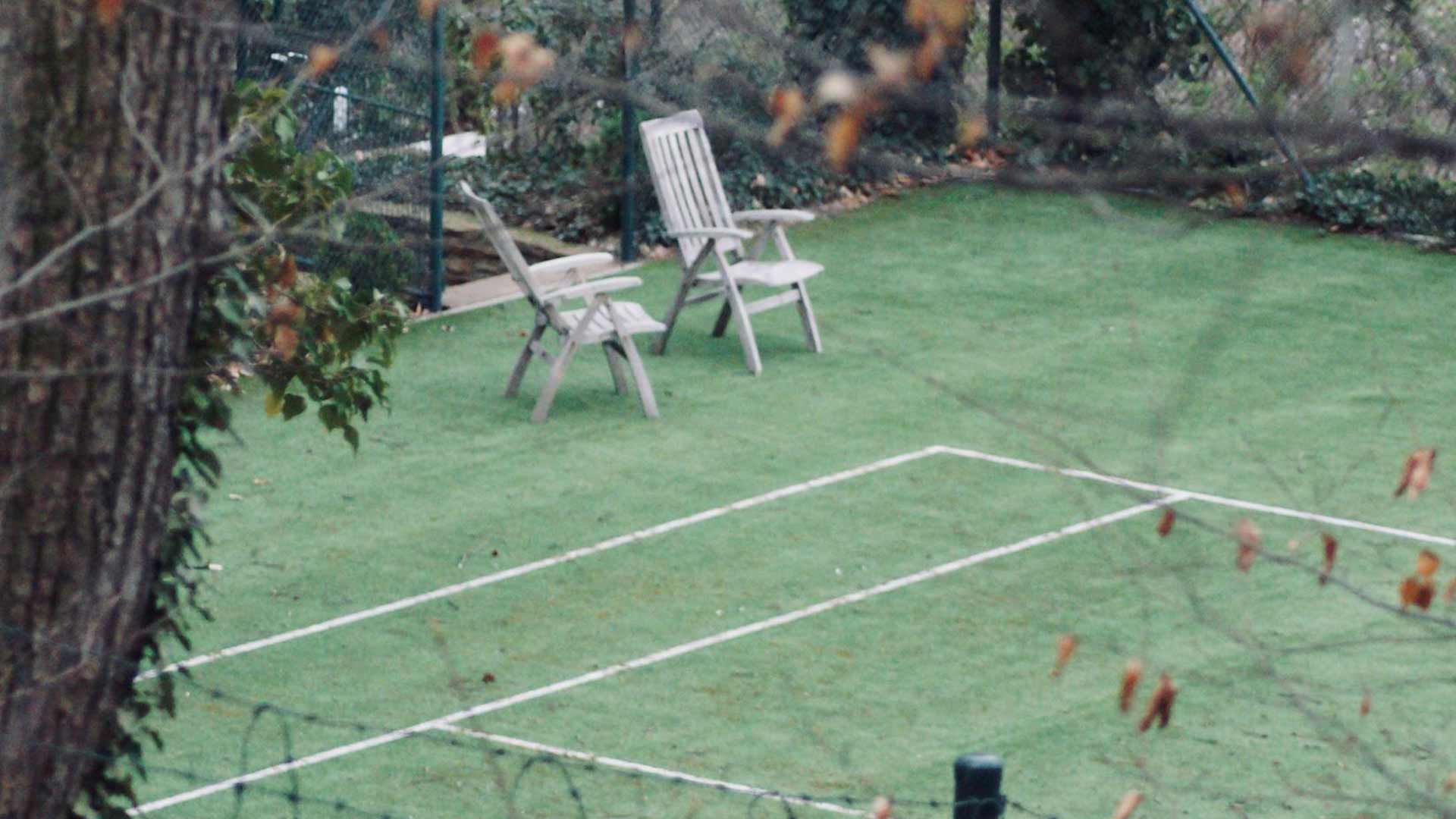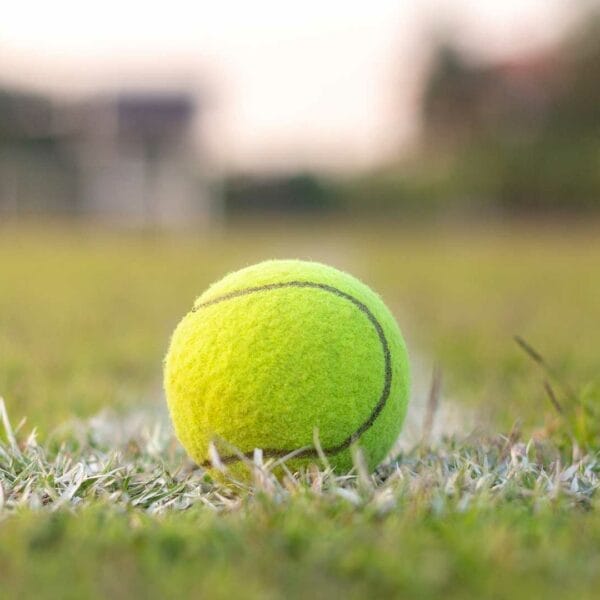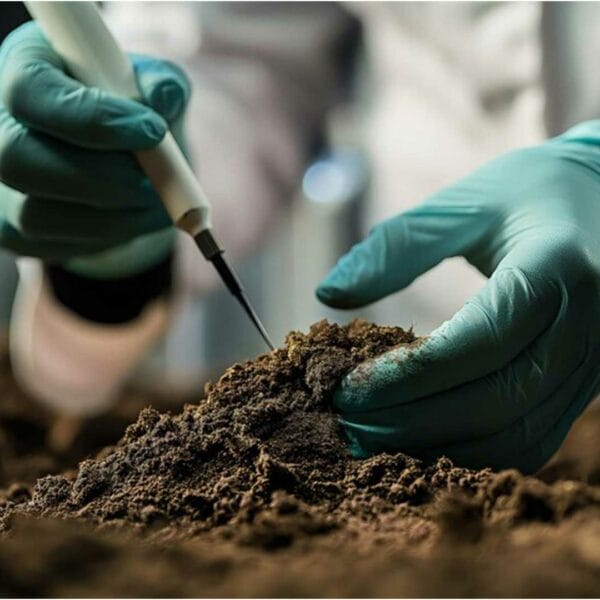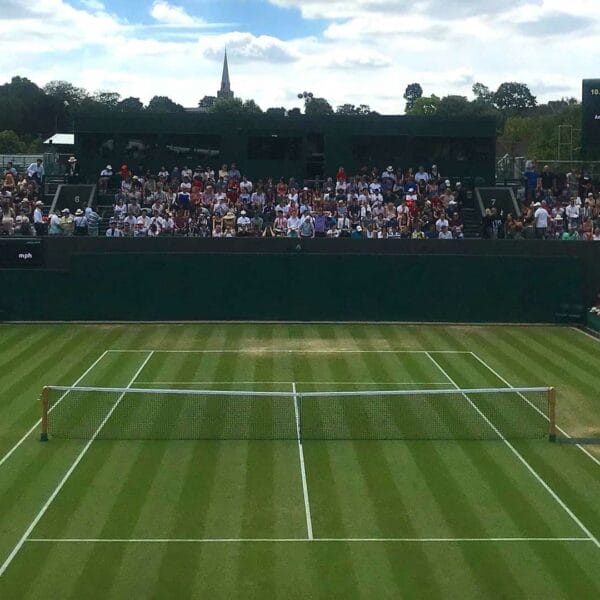What footwear is recommended for grass court tennis?
Introduction to Grass Court Tennis Footwear
Grass court tennis is one of the most prestigious and challenging surfaces in professional tennis, It requires players to possess exceptional agility, speed, and endurance. When it comes to competing on grass courts, having the right footwear can make the difference between victory and defeat. In this section, we will explore the world of grass court tennis footwear, exploring its unique characteristics, key features, and essential requirements.
Tennis shoes designed specifically for grass courts are engineered to provide optimal performance, comfort, and support during intense matches. These shoes typically feature a combination of innovative technologies and materials that cater to the demands of playing on grass surfaces. From responsive cushioning systems to breathable upper materials, every aspect of grass court tennis footwear has been carefully crafted to help players perform at their best.
Compared to clay and hard courts, grass courts present distinct challenges. The soft, uneven terrain requires shoes that can provide excellent traction, stability, and support to prevent injuries and improve overall gameplay. Additionally, grass court tennis shoes must be able to handle the rapid changes in temperature and humidity that occur during matches, ensuring that players remain cool and dry throughout the competition.
In the following sections, we will explore the key features of recommended footwear, types of soles suitable for grass courts, upper material options for comfort and support, and more. By understanding the intricacies of grass court tennis footwear, players can make informed decisions when selecting the perfect shoe for their needs, ultimately enhancing their performance and success on the court.
Key Features of Recommended Footwear
When choosing the right footwear for grass-court tennis, several key features should be considered. These features work together to provide optimal performance, comfort, and support during intense matches.
One of the primary considerations is the sole design, which plays a crucial role in providing traction, stability, and support on the grass surface. A good grass court tennis shoe should have a non-marking outsole made from durable rubber compounds that offer excellent grip and durability. This helps prevent slipping and sliding on the court, reducing the risk of injury and improving overall gameplay.
Another essential feature is the midsole, which provides cushioning and shock absorption. A responsive midsole helps reduce the impact of each step, allowing players to move quickly and efficiently around the court without feeling fatigued. Some popular midsole technologies used in grass court tennis shoes include EVA (ethylene-vinyl acetate), PU (polyurethane), and gel-based systems.
The upper material is also critical to providing comfort and support. Breathable mesh panels allow for airflow and moisture management, keeping feet cool and dry during long matches. Additionally, some grass-court tennis shoes feature reinforced toe caps and heel counters for added protection against abrasions and impacts.
Some other notable features of recommended footwear include:
– Weight reduction technology to minimize fatigue and enhance agility
– Ortholite footbeds for improved arch support and cushioning
– Integrated lacing systems for secure fit and easy adjustments
– Reflective materials for increased visibility during early morning or evening matches
– Water-repellent treatments to protect against rain and wet conditions
By considering these key features, players can select the perfect shoe for their needs, enhancing their performance and success on the grass court. Whether you’re a seasoned pro or an up-and-coming player, investing in a high-quality grass-court tennis shoe can make all the difference in your game.
Types of Soles Suitable for Grass Courts
The type of sole used in grass court tennis shoes is crucial in providing the necessary traction, stability, and support required for optimal performance on the grass surface. There are several types of soles suitable for grass courts, each offering unique benefits and characteristics.
Non-Marking Outsoles
As mentioned earlier, non-marking outsoles are a must-have for grass court tennis shoes. These outsoles are designed to provide excellent grip and durability while preventing scuff marks on the court. They are typically made from durable rubber compounds that can withstand the rigors of intense play.
Tread Patterns
The tread pattern of the sole plays a significant role in providing traction and stability on the grass surface. Different tread patterns are designed to cater to various playing styles and court conditions. For example, a more aggressive tread pattern may be suitable for players who rely heavily on quick movements and sharp turns, while a more subtle tread pattern may be better suited for players who prefer a smoother, more controlled style of play.
Blown Rubber Soles
Blown rubber soles are another popular option for grass-court tennis shoes. They are made by inflating rubber particles to create a lightweight yet durable material that offers excellent cushioning and shock absorption. Blown rubber soles are ideal for players who require a balance between traction and comfort.
Hybrid Soles
Hybrid soles combine different materials and technologies to offer the best of both worlds. For example, a hybrid sole may feature a blown rubber midsection surrounded by a durable rubber outsole. These soles are designed to provide exceptional traction, stability, and comfort, making them a popular choice among professional and amateur players alike.
Ultimately, the type of sole used in a grass court tennis shoe will depend on individual preferences and playing styles. By understanding the different types of soles available, players can choose the perfect shoe to suit their needs and enhance their performance on the grass court.
Upper Material Options for Comfort and Support
When it comes to choosing the right upper material for your grass court tennis shoes, there are several options to consider. The upper material should provide a comfortable fit, support your foot during intense play, and offer breathability to keep your feet cool and dry.
Mesh Uppers
Mesh uppers are a popular choice among grass-court players due to their breathability and lightweight design. They allow for airflow, keeping feet cool and dry even during long matches. However, mesh uppers may not provide the same level of support as other materials, making them less suitable for players with high arches or those who need additional ankle support.
Synthetic Materials
Synthetic materials such as nylon, polyester, and polyurethane are commonly used in grass-court tennis shoes. These materials offer a combination of breathability, support, and durability, making them an excellent choice for players who require a balance between comfort and performance. Synthetic materials are also often treated with moisture-wicking technology to keep feet dry and comfortable throughout the match.
Leather Uppers
Leather uppers are known for their durability and support, making them a popular choice among professional players. They provide a snug fit and help reduce blisters and hotspots. However, leather uppers can be heavy and may not breathe as well as synthetic materials, which can lead to discomfort during long matches.
Knit Uppers
Knit uppers have gained popularity in recent years due to their flexibility and breathability. These uppers are often made from a combination of synthetic and natural fibres, providing a comfortable fit and excellent support. Knit uppers are also lightweight and moisture-wicking, making them an excellent choice for players who prioritize comfort and performance.
The choice of upper material ultimately depends on individual preferences and playing styles. Some players may prefer the support and durability of leather uppers, while others may opt for the breathability and comfort of mesh or knit uppers. By considering these factors, players can choose the perfect shoe to suit their needs and enhance their performance on the grass court.
Cushioning and Shock Absorption Requirements
Cushioning and shock absorption are crucial components of grass-court tennis shoes, They help reduce the impact of each step and prevent injuries. When selecting a shoe, look for features that provide adequate cushioning and shock absorption to ensure a smooth ride and optimal performance.
Key Components of Cushioning
1. Midsole Technology: A good midsole should provide sufficient cushioning to absorb the impact of each step. Look for shoes featuring EVA (ethylene-vinyl acetate), PU (polyurethane), or TPU (thermoplastic polyurethane) midsoles, which offer superior cushioning and shock absorption properties.
2. Foam Density: The density of the foam used in the midsole affects its ability to absorb shock. Thicker, more dense foams tend to provide better cushioning than thinner, less dense ones.
3. Heel-to-Toe Offset: A lower heel-to-toe offset allows for a more natural stride and reduces the impact on joints. Look for shoes with a low to moderate heel-to-toe offset (around 8-10mm).
Shock Absorption Mechanisms
1. Gel or Rubber Inserts: Some shoes feature gel or rubber inserts in the heel or forefoot to provide additional shock absorption.
2. Dynamic Flywire Systems: These systems use thin wires to provide support and stability while allowing for flexibility and shock absorption.
3. Springboard Midsoles: Some shoes feature springboard midsoles that store energy during landing and release it during takeoff, reducing the impact on joints.
Grass Court Specific Requirements
1. Low Profile Design: Grass courts require quick movements and rapid changes of direction, so a low-profile design is essential to minimize weight and maximize agility.
2. Lightweight Materials: Lighter materials help to reduce fatigue and improve overall performance.
3. Responsive Cushioning: Grass court players need responsive cushioning to quickly react to changing situations on the court.
By considering these factors, you can select a shoe that meets your specific needs and enhances your performance on the grass court. Remember to try out different models and brands to find the perfect fit and feel.
Traction and Stability Considerations
Traction and stability are critical aspects of grass-court tennis shoes, They enable players to move swiftly and confidently around the court without slipping or losing balance. A good pair of shoes should provide excellent traction and stability to help players execute precise shots, make sharp turns, and maintain their footing on various grass-court surfaces.
Types of Outsoles
1. Herringbone Patterns: These patterns feature a series of V-shaped grooves that provide exceptional traction on grass courts. They allow for smooth movement and quick changes of direction.
2. Circular or Elliptical Grooves: Shoes with circular or elliptical grooves offer improved traction and stability by providing a larger contact area between the sole and the ground.
3. Conical or Pyramid-Shaped Tread: This type of tread pattern provides excellent grip on wet or dry grass courts, making it ideal for players who frequently play in varying weather conditions.
Materials Used for Traction
1. Rubber Compounds: High-quality rubber compounds are often used to create durable and grippy outsoles that can withstand the rigors of frequent play.
2. Carbon Rubber Blends: These blends combine the benefits of carbon and rubber to create a highly durable and grippy material that resists wear and tear.
Stability Features
1. Internal Support Systems: Many modern tennis shoes feature internal support systems, such as arch supports or lateral stabilizers, that help to maintain foot stability and prevent excessive pronation or supination.
2. External Stabilizing Elements: Some shoes incorporate external stabilizing elements, such as heel counters or toe caps, that provide additional support and protection for the foot.
3. Weight Distribution: A well-designed shoe should distribute weight evenly across the foot, ensuring that the player remains stable and balanced throughout their movements.
When selecting a shoe for grass court tennis, consider the following key factors:
* A herringbone or circular/elliptical groove pattern for optimal traction
* A durable and grippy rubber compound or carbon rubber blend for long-lasting performance
* An internal support system or external stabilizing element for added stability
* Even weight distribution for enhanced balance and control
By prioritizing traction and stability, you can choose a shoe that helps you perform at your best on the grass court, whether you’re a beginner or an experienced player.
Breathability and Moisture Management Needs
Breathability and moisture management are crucial aspects of grass-court tennis shoes, particularly during intense matches when players tend to sweat profusely. A breathable shoe allows air to circulate freely within it, reducing the buildup of heat and moisture that can lead to discomfort, blisters, and decreased performance.
Key Features of Breathable Materials
1. Mesh panels: Strategically placed mesh panels on the upper, tongue, or quarter sections of the shoe provide ventilation and airflow, helping to keep feet cool and dry.
2. Perforated materials: Some shoes feature perforated materials, such as leather or synthetic uppers, which allow for increased airflow and moisture transfer.
3. Porous membranes: Membranes like Gore-Tex or e-Vent provide waterproofing while maintaining breathability. They prevent water from entering the shoe while allowing moisture to escape.
Moisture Management Technologies
1. Moisture-wicking linings: Specialized linings, often made from synthetic materials, draw sweat away from the skin and evaporate it quickly, keeping feet dry and comfortable.
2. Anti-microbial treatments: Some shoes feature anti-microbial treatments that inhibit the growth of bacteria and fungi, reducing odour-causing microorganisms and promoting a fresher environment within the shoe.
3. Quick-drying materials: Shoes constructed from quick-drying materials, such as nylon or polyester, can reduce drying time and minimize the risk of blisters.
Benefits of Breathable and Moisture-Managing Shoes
1. Enhanced comfort: Breathable shoes reduce the likelihood of hotspots, blisters, and discomfort caused by excessive sweating.
2. Improved performance: By keeping feet cool and dry, players can maintain focus and energy levels, leading to better overall performance.
3. Reduced risk of injury: Excessive sweating can lead to slips, trips, and falls; breathable shoes mitigate this risk by providing a secure foothold.
When selecting a grass court tennis shoe, prioritize breathability and moisture management features to ensure optimal comfort, performance, and safety. Look for shoes with strategically placed mesh panels, porous membranes, and moisture-wicking linings to stay ahead of the game.
VIII. Popular Brands and Models for Grass Court Players
Popular Brands and Models for Grass Court Players
Several renowned brands offer high-quality grass court tennis shoes designed to meet the specific demands of the sport. When choosing a suitable pair, consider the following popular brands and models:
Nike Air Zoom Vapor X
This shoe boasts exceptional speed, agility, and responsiveness, making it ideal for fast-paced grass court tennis.
Adidas Barricade
With its innovative Boost cushioning system, the Adidas Barricade provides superior comfort and support during long matches.
New Balance 996v4
The New Balance 996v4’s supportive and stable design makes it perfect for players who require additional ankle support and stability.
Asics Gel-Resolution 8
This shoe offers excellent traction and stability thanks to its unique outsole design and gel cushioning system.
Head Graphene 360 Speed Pro
Engineered for speed and agility, the Head Graphene 360 Speed Pro features a lightweight and responsive design.
Prince Textreme Warrior 100
This shoe combines exceptional comfort and support with a durable and grippy outsole, making it an excellent choice for grass-court tennis players.
These popular brands and models cater to various playing styles and preferences, ensuring that players can find the perfect fit for their needs. When selecting a shoe, consider factors such as your personal style, foot shape, and playing level to make an informed decision.
In addition to these top picks, other notable brands offering high-quality grass court tennis shoes include Babolat, Wilson, and Dunlop. Each brand has its unique strengths and features, so it’s essential to research and compare different options before making a final selection.
Ultimately, investing in a well-designed and high-performance grass court tennis shoe can significantly impact your gameplay and overall experience. By choosing a reputable brand and model, you’ll be able to perform at your best and enjoy the thrill of competing on the grass courts.
Customization and Fitting Tips for Optimal Performance
Customization and fitting are crucial aspects of finding the right grass court tennis shoes. A proper fit ensures optimal performance, reduces the risk of injury, and enhances overall comfort during play. Here are some valuable tips to help you customize and fit your grass court tennis shoes:
When trying on shoes, wear the same type of socks you plan to wear during games. This will give you a more accurate representation of how the shoe will feel during actual play.
Consider visiting a speciality sports store where knowledgeable staff can assist you in finding the perfect fit. They may also have access to a wider range of sizes and styles.
Pay attention to the width and depth of the toe box. Ensure there’s enough room for your toes to wiggle comfortably without feeling constricted.
The heel should fit snugly but not too tightly. You should be able to slide your finger under the back of the shoe without difficulty.
Look for shoes with adjustable lacing systems or straps to accommodate different foot shapes and sizes.
Some players prefer a slightly looser fit to allow for swelling during intense play. However, this should be balanced against the need for adequate support and stability.
If you’re purchasing online, take advantage of return policies and sizing charts to ensure the best possible fit.
In addition to these general guidelines, consider consulting with a professional fitter or a coach who can assess your individual foot shape and playing style to recommend the most suitable shoe.
By prioritizing customization and fitting, you can optimize your performance on the grass courts and reduce the risk of discomfort or injury. Remember, a well-fitted shoe is essential for achieving peak performance and enjoying the game to its fullest potential.
Conclusion and Final Recommendations
In conclusion, selecting the right footwear for grass court tennis is crucial for optimal performance, comfort, and injury prevention. Based on our analysis of key features, sole types, upper materials, cushioning requirements, traction needs, breathability demands, and popular brand options, we recommend investing in shoes that prioritize flexibility, support, and moisture management. Specifically, look for shoes with non-marking outsoles, breathable mesh uppers, and responsive midsoles that provide excellent shock absorption and stability. By considering these factors and choosing a shoe from reputable brands such as Nike, Adidas, or Asics, you can improve your game while minimizing the risk of foot injuries. Ultimately, finding the perfect balance between performance, comfort, and durability will enable you to dominate on the grass courts and take your tennis game to new heights.




